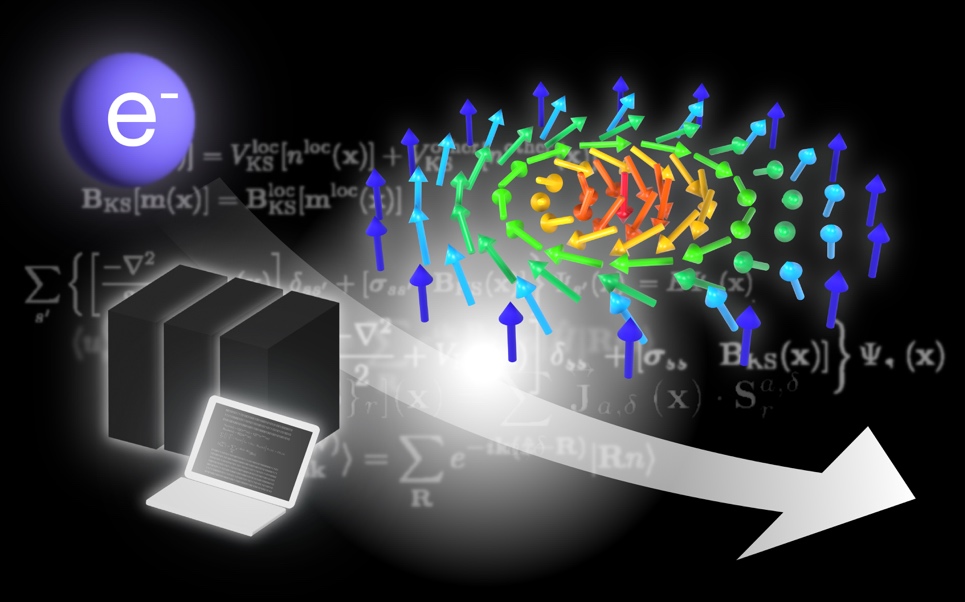DATE2025.03.13 #Press Releases
First-principles calculation method developed to predict physical properties derived from complex nanospin structures
Contributing to the Development of Next-Generation High-Speed, Low-Energy-Consumption Spintronics Devices
Summary of Presentation
In recent years, materials with noncoplanar spin structures have occupied an important position in spintronics research and have attracted great expectations as promising next-generation materials. While experimental research in this field has progressed rapidly, theoretical analysis has so far relied on simplified models. This has created a demand for the development of non-empirical predictive methods that give solutions without using empirically derived parameters obtained from experiments that reflect the characteristics of individual materials. However, noncoplanar spin structures are generally large in size and require enormous computational resources for numerical simulations, making their analysis extremely challenging.
Assistant Professor Xiaoyu Chen at Institute for Materials Research, Tohoku University (Guest Researcher at The Center for Emergent Matter Science (CEMS), RIKEN), Associate Professor Takuya Nomoto at Graduate School of Science, The Tokyo Metropolitan University (Guest Researcher at The Center for Emergent Matter Science (CEMS), RIKEN), Associate Professor Max Hirschberger at Graduate School of Engineering, The University of Tokyo (Unit Leader, The Center for Emergent Matter Science (CEMS), RIKEN) and Professor Ryotaro Arita at School of Science, The University of Tokyo (Team Leader, The Center for Emergent Matter Science (CEMS), RIKEN) have developed a novel first-principles calculation method based on density functional theory (DFT) that enables the calculation of electronic states in materials with large-scale spin structures. This method allows for highly accurate numerical predictions of the physical properties of magnetic materials with noncoplanar spins. Additionally, by analyzing the computational results, they have elucidated the relationship between microscopic electronic wavefunctions and macroscopic physical phenomena.
The results of this research were published in the journal Physical Review X published by the American Physical Society (APS) on March 11, 2025 (EST).
 Figure: Conceptual diagram of this research. A new method for simulating noncovalent spin structures has been developed that can accurately predict their unique interactions with passing electrons. The upper right figure shows a skyrmion crystal structure, a type of non-coplanar spin structure.
Figure: Conceptual diagram of this research. A new method for simulating noncovalent spin structures has been developed that can accurately predict their unique interactions with passing electrons. The upper right figure shows a skyrmion crystal structure, a type of non-coplanar spin structure.
Related Links
Tohoku University, The Tokyo Metropolitan University, Graduate School of Engineering, The University of Tokyo, RIKEN
Published Journals
-
Journal name Physical Review XTitle of paper


